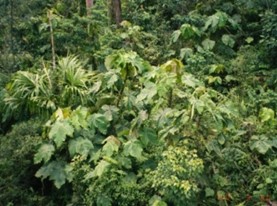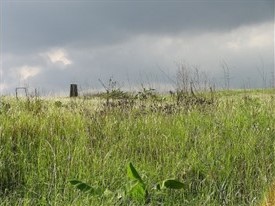Home > International Partnerships > Collaborative Research > Optimized Scenarios of Soil Remediation Using in Organic Matter Accumulation Processes in Tropical Degraded Lands
Update:March 10, 2020
Main content starts here.
Optimized Scenarios of Soil Remediation Using in Organic Matter Accumulation Processes in Tropical Degraded Lands

1. Partners
Mulawarman University, Indonesia
2. Research Period
FY 2014-2016 Grant-in-Aid for Scientific Research (KAKENHI)
3. Lead Researcher
FUJII, Kazumichi
4. Background
Increased infrastructure and globalization have been shown to increase rates of deforestation and change agricultural practices to continuous cropping systems in tropical regions. The soil degradation caused by continuous cropping can increase the abandonment of degraded agricultural soils and further deforestation. Soil acidification and loss of soil organic matter are major processes of soil degradation. To mitigate soil degradation caused by land-use changes, the effects of vegetation or land use on soil acidification and organic matter dynamics need to be assessed.
5. Research Goal
In East Kalimantan, Indonesia, 30-year changes in soil pH and organic matter stock were continuously monitored after forest fires to advise the land-use strategy to mitigate soil acidification and organic matter loss.
6. Research Strategy
In the tropical forests of East Kalimantan, Indonesia, 30-year changes in soil pH and organic matter stock were continuously monitored after forest fires, using archive soil samples. Soil pH and soil carbon stocks were compared between pristine dipterocarp forest, Macaranga forest, Acacia forest, Imperata grassland, and oil palm plantations using litter bag tests and soil solution studies.
7. Scientific Achievement
The Imperata grasslands can maximize soil carbon stocks for up to 10 years, because of their considerable root litter inputs. However, additional organic matter storage is limited over the next 20 years, due to high grass litter decomposition in less acidified soils. The conversion of Imperata grasslands to oil palm plantations causes the greatest loss of soil organic matter, while Acacia plantations on Imperata grasslands or Macaranga forests maximize soil carbon stocks, due to an input of recalcitrant forest litters and reduced microbial activity in acidified soils. Farmers could adopt short-term (<10 years) grass fallow or longer-term (>10 years) fallow in Acacia plantations on Imperata grasslands or Macaranga regeneration forest to maximize soil organic matter storage. The optimum and most feasible land-use strategies should be selected based on the length of fallow period and the original acidity of soil.

Pioneer Macaranga trees
8. Applications
Use of invasive Acacia and pioneer Macaranga trees and Imperata grass and their ash input can improve fertility of the cultivated soils and minimize future deforestation.

Imperata grassland after deforested and abandoned lands
9. Publications
Fujii K (2014) Soil acidification and adaptations of plants and microorganisms in Bornean tropical forests. Ecological Research, 29 (3), 371-381.
Fujii, K., Shibata, M., Kitajima, K., Ichie, T., Kitayama, K., & Turner, B. L. (2018). Plant–soil interactions maintain biodiversity and functions of tropical forest ecosystems. Ecological Research, 33(1), 149-160.
Hayakawa, C., Fujii, K., Funakawa, S., & Kosaki, T. (2018). Effects of sorption on biodegradation of low-molecular-weight organic acids in highly-weathered tropical soils. Geoderma, 324, 109-118.
Hseu, Z-Y., Zehetner, F., Fujii, K., Watanabe, T., Nakao, A. (2018) Geochemical fractionation of chromium and nickel in serpentine soil profiles along a temperate to tropical climate gradient, Geoderma, 327, 97-106
Fujii K., Hayakawa C, Sukartiningsih, Inagaki Y, Kosaki T (2020) Effects of land use change on turnover and storage of soil organic matter in a tropical forest. Plant and Soil, 446, 425-439.
Copyright © Forest Research and Management Organization. All rights reserved.
